Do you need engaging Presidents’ Day ideas for kids to use in your classroom this February? Whether you’re celebrating Lincoln and Washington’s birthdays, or you want to bring some other commanders in chief into the equation, we’ve got you covered!
We know you’ve got your hands full in February with cold and flu season, holidays and more, so the Teach Starter teacher team has put together a full array of fun activities to make Presidents’ Day more than just another day off from school.
Keep reading for ideas that will inspire you to plan positively presidential lessons!
Why Is Presidents’ Day Important for Kids?
Before we talk about our favorite ideas for celebrating Presidents’ Day with kids in the classroom, we need to touch on the big question we always ask before we tackle a topic with our students: Why?
While some districts push teachers to include the federal holiday in the curriculum, others give it a wide berth. We’ve found that setting aside some time to talk about presidents George Washington and Abraham Lincoln and why this date is about more than some really good sales can be beneficial for kids of any age — and not just those studying Colonial America or the Civil War in social studies.
Presidents’ Day lessons are part of kids’ development of an overall understanding of the office of the presidency and why it’s so important. These lessons can lay the groundwork for their active involvement as citizens down the road, making them more inclined to see voting as a civic duty and an important part of their role as Americans.
Learning about the presidents can also help kids understand the principles and values that have guided the nation, as well as the challenges and decisions that the presidents have faced. In addition, kids may be fascinated by the stories and accomplishments of the presidents, or by the fact that they have held such a powerful and influential position.
Kids in America tend to have an overall positive view of the presidency — regardless of party — and political scientists who have studied what kids think of politics have found that’s remained stable over the past five decades. In fact, their focus has remained largely on the office itself, rather than on the person in the office, and no doubt that’s because of the important work of teachers.
Presidents’ Day Ideas for Your Classroom
Before you wish your students a happy holiday weekend, give them a chance to explore the themes behind this important day with some fun and interesting classroom activities! Whether you’re looking for something serious or a little more light-hearted, we’ve got everything you need to help your students engage in this important day.
Play Think, Write, Pass With a Presidential Twist
Do you use think, write, pass to get your students engaged in writing? If not, this Presidents’ Day activity may make it a favorite in your classroom!
Write a sentence starter on the board about presidents, such as “The most important quality of a president is …” or “The next American president should be a woman because …”
Hand an index card or sheet of paper to a student, and set a timer. That first student writes until they hear the timer go off, and then they should pass it to the next student, who picks up writing right where their classmate left off, and so on.
Students need to keep going until they have either three important qualities (with a reason behind each!) or three valid reasons. The trick is to change up the amount of time each student has to make this activity more fun and challenging. Try allowing one student only enough time to pick up their pencil, or allow them to write just three or four words, and you’ll be guaranteed plenty of laughs!
Make Blackout Poetry Out of Presidential Inaugural Addresses
What does it take to become president? Besides earning enough votes to win the electoral college, the president must be officially inaugurated!
Take some time before or after Presidents’ Day to explore the words that each president has said on their own Inauguration Day. You can watch videos of some of our past presidents making their famous speeches, from 35th President John F. Kennedy’s famous “Ask not what your country can do for you …” to President Ronald Reagan’s “Government is not the solution to our problem.”
Students can break out into small groups to examine excerpts of various speeches. Have your students discuss the excerpts within their groups, identifying key phrases, themes and the particular president’s vision for the nation.
Then bring them all back together for the fun and creativity of blackout poetry! Students should read the entire inaugural address, then blackout (with colored pencils or markers) the parts they don’t need. The remaining words or sentences combine to form a poem!
Build the Presidents’ House
The White House has been home to every American president since President John Adams and his wife, Abigail, moved in back in the year 1800. Why not bring STEM and social studies standards together with a hands-on activity that’s worth a spot at 1600 Pennsylvania Avenue? Challenge your sixth graders to design their own White House with a small group project that not only integrates various STEM disciplines but also promotes critical thinking and collaboration.
Have students use coordinate geometry to map out the floor plan of the White House on a grid, identifying key rooms and spaces. They’ll need to consider scale and proportions, of course, and select appropriate materials for constructing their White House models!

Teaching early elementary this year? Your younger students don’t have to miss out on the fun of housing the commander-in-chief.
Flex those fine motor muscles with a White House building challenge made just for the primary set! This President’s Day activity for pre-school or kindergarten includes a download of the president’s home, and kids can add some creativity to their version of 1600 Pennsylvania Avenue.
Take a Virtual Field Trip to the FDR Presidential Library
Franklin Delano Roosevelt was the only American president to serve more than two terms — paving the way for what we now know as “term limits” here in the US. Take your class on a virtual (and free) trip to this historic president’s official home in upstate New York to learn about his presidency and the work of First Lady Eleanor Roosevelt.
Revisit the Revolution
Without the founding fathers and the American Revolution, we wouldn’t have a United States of America or an American presidency. Use this February holiday as a way to introduce the key figures who played significant roles in the American Revolution and the drafting of the Constitution.
Tell stories about their lives, including their motivations, accomplishments, and challenges, and offer up information about the presidents who were involved.
For example, did you know only two presidents — George Washington and James Madison — signed the US Constitution?
Explore a complete collection of ready-made American revolution resources created by social studies teachers!
Create Presidential Timelines
Do you need a Presidents’ Day activity that will touch on the various third grade standards for ELA? Creating presidential timelines not only gives your students practice finding information from various illustrations and texts, but it also gives them practice with conducting short research projects to build their knowledge. It’s a win-win!
Allow students to pick a president for their timeline project, and challenge them to find key information about their chosen American leader, from the date he was born to the day he died, significant events during their presidency and any other notable achievements.
Teach Your Class How Coins Are Made
For most kids, the closest they will ever get to a United States president is seeing his face on their money. But just how does a president’s face end up on a coin? And how are coins made?
Explore the concept of our currency with a virtual visit to the US Mint to see how the money is made. Do you have more time at the end of the day? You can listen to the “How are images chosen for coins?” episode of the popular kids’ podcast But Why: A Podcast for Curious Kids to extend the presidential money fun!
Engage Your Science Classes in Presidential Coin Cleaning
Give your science class a taste of Presidents’ Day with a coin-cleaning experiment. Gather pennies (bearing Washington’s face, of course) and nickels (bearing Jefferson’s profile), as well as water, vinegar, ketchup, and baking soda to determine which chemical reactions will do the best job if they are used for cleaning the coins.
Before introducing this hands-on activity, you can explain to your students that scientists once tested American money and found hundreds of microorganisms on them — yuck!
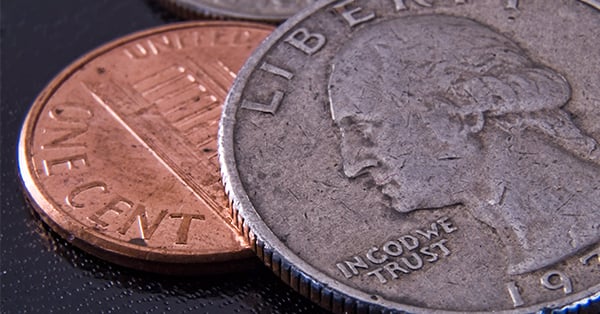
Students can make predictions about which substances will do the best job of cleaning the coins and why, perform the experiment, observe, and, of course, record their results.
You might want to end the discussion with a little reminder about washing your hands after you touch money …
Design Your Own Money
Extend the money-based lesson by adding a chance to design their own currency into your President’s Day activities, or save these worksheets for financial literacy lessons at any point in the year. Analyze a dollar bill with your class, and then let them take over by designing their own currency. Your kids can also plan and illustrate a coin.
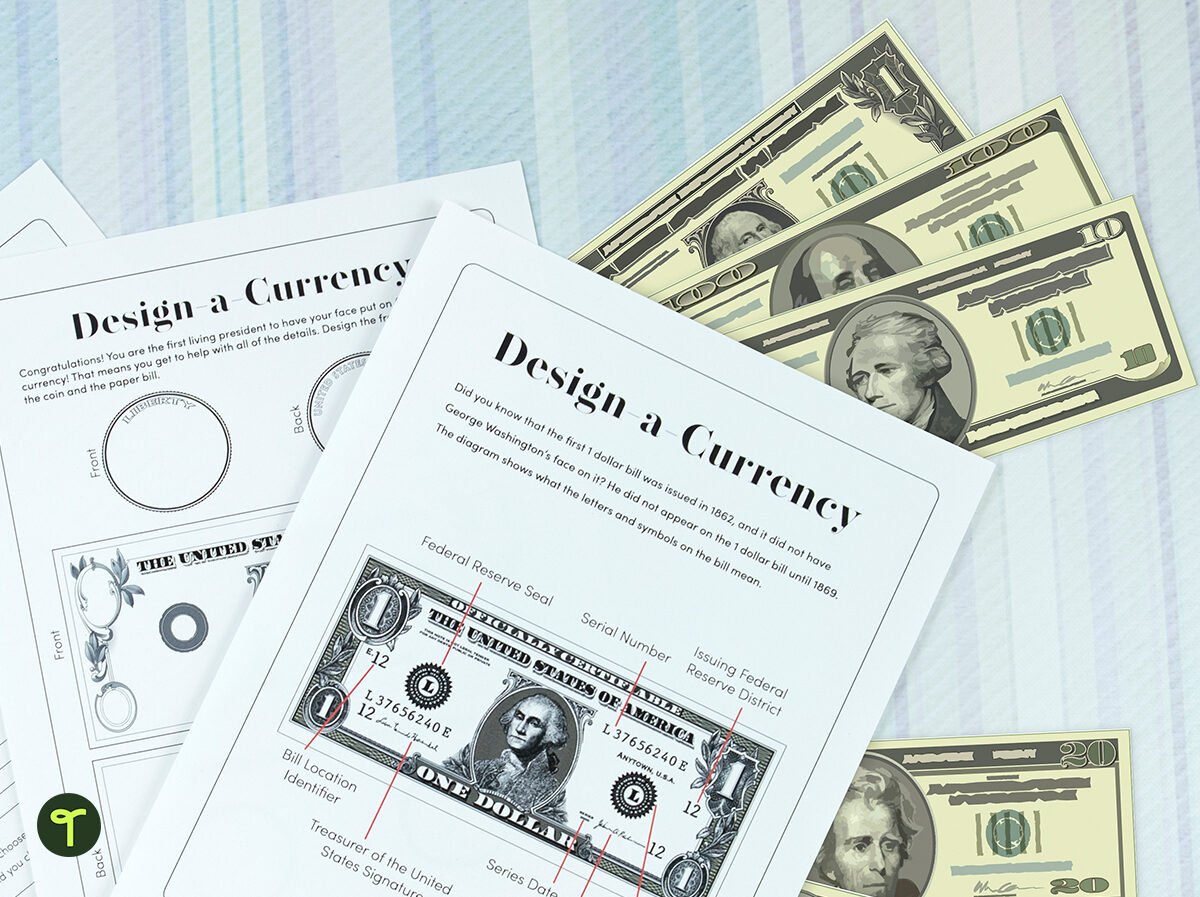
Read Fun Books About Presidents
There are plenty of fun children’s books about presidents — from the books about the actual people who have lived at 1600 Pennsylvania Avenue (or the former home of the commander in chief) or those about kids who become president of … something. Does your school have a student government of some sort? Take the time to talk and make the topic of Presidents’ Day relate to their every day with some of these books about kid presidents:
- Grace For President by Kelly DiPucchio
- Kid Presidents: True Tales of Childhood from America’s Presidents (Kid Legends) by David Stabler
- If I Ran for President by Catherine Stier
- Marvin Redpost #5: Class President by Louis Sachar
After reading, have each student create their own presidential mini book! You can print off a template dedicated to Thomas Jefferson here!
Dive Deep Into the Presidents Involved in the Declaration of Independence
The Declaration of Independence may have been written before our nation had any presidents, but it was largely drafted by the third man to hold the office — President Thomas Jefferson — and it bore both his signature and that of future president John Adams.
You can start off by introducing the concept of independence and what it means to be a sovereign nation. Discuss the reasons why the colonists wanted to break away from British rule, and explain the concept of natural rights, including the ideas of “life, liberty, and the pursuit of happiness” as outlined in the Declaration of Independence.
Finally, discuss the role of the Declaration of Independence in the Revolutionary War. Explain how it served as a statement of the colonists’ grievances against the British government and their justification for seeking independence.
Incorporate the Holiday in Your Punctuation Lessons
If there’s one holiday better than any other for teaching kids about the importance of appropriate apostrophe placement, this is it! Despite not being officially Presidents’ Day, it’s widely accepted that the third Monday in February now celebrates all presidents — from President George Washington to President Joe Biden.
Discussing grammar in the classroom? Take the chance to discuss how the placement of the apostrophe after the “s” in Presidents changes the meaning of the holiday.
Prompt Kids to Share What They Would Do If They Were President …
Do you ever wonder what your students would do if they were president of the United States?
This free If I Were President… worksheet is perfect for writing centers to challenge students to think creatively as writers and also think about the world around them. Students can think about what they’d do if they were president of the United States or think more locally as president of a school government association. What would they change? What would they try to do, even if it might not be successful? This worksheet can fit nicely within the context of helping your students build a growth mindset.
This Presidents’ Day writing center activity can also be used as a research prompt. It is a great way to examine how other presidents have helped to develop the United States throughout history.
Hold a Mock Election
There’s no reason to wait until November to talk about elections with your class — in fact having the discussion around Presidents’ Day can take some of the heat out of the conversation that comes with parents at home talking about particular candidates in the lead-up to Election Day. Use this less politically charged time of the year to talk about the electoral process and hold a mock election in the class!
Set Up a Presidents’ Day Word Wall Display
Start your Presidents’ Day lessons with a quick discussion regarding some of the vocabulary important to American history, from “democracy” to “Mount Vernon.” Our Presidents’ Day Word Wall Vocabulary resource has more than 55 vocabulary cards. Create a Presidents’ Day word wall chart in your classroom to help immerse your students in the day.
Why not have a class discussion about additional vocabulary that could be included?
Make Your Own Funky Uncle Sam
Maybe you’ve seen our funky resource collection with Zentangle art fun including penguins and snowmen? There’s a perfect Presidents’ Day craft hiding in the mix: the Funky Uncle Sam Craft Activity.
Help your students get into the patriotic spirit with this fun activity that can brighten up the classroom on your student work wall. Students can draw lines and patterns to decorate Uncle Sam before cutting and pasting the template to a colorful piece of construction paper.
Bonus: Teach your students about the origins of the name Uncle Sam, and introduce them to the real-life Samuel Wilson, aka “Uncle Sam.”
Make Presidents’ Day Finger Puppets
Can an activity possibly get more hands-on for kindergarten or first grade than making some Presidents’ Day Finger Puppets? Print the puppet template on cardstock, and place them in your writing center for some fun dramatic and imaginative play.
Discuss each president with your class and try one of the following activities:
- Practice identifying coins or presidents.
- Practice identifying coins by value, or adding and subtracting coins together.
- Use the templates to write facts about each president and work on handwriting skills.
- Use the puppets to present some facts to the class in ‘character’ as one of the represented presidents.

A Quick Note on Presidents’ Day Lesson Planning
It’s important to be honest with students about our presidents and not portray them all as unblemished heroes. A discussion of President Andrew Jackson, for example, is not complete without bringing to light the atrocities of the Trail of Tears, while talking about many of the presidents from the Colonia era may require a look at their involvement in the enslavement of Black people. How the lesson goes will, of course, be dependent on your students’ age and grade.

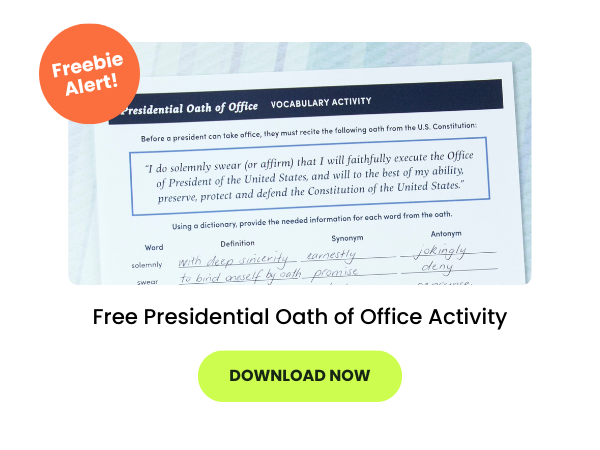

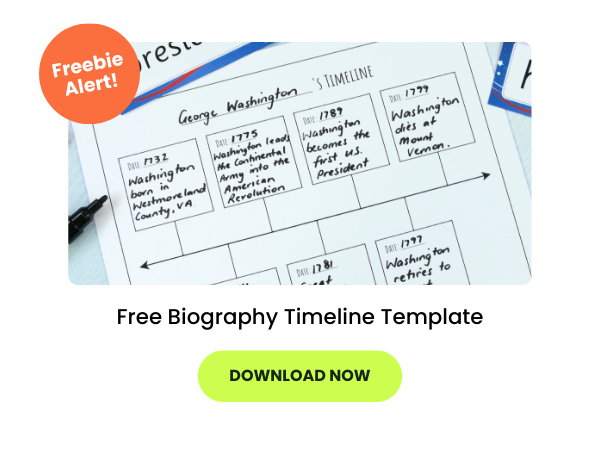
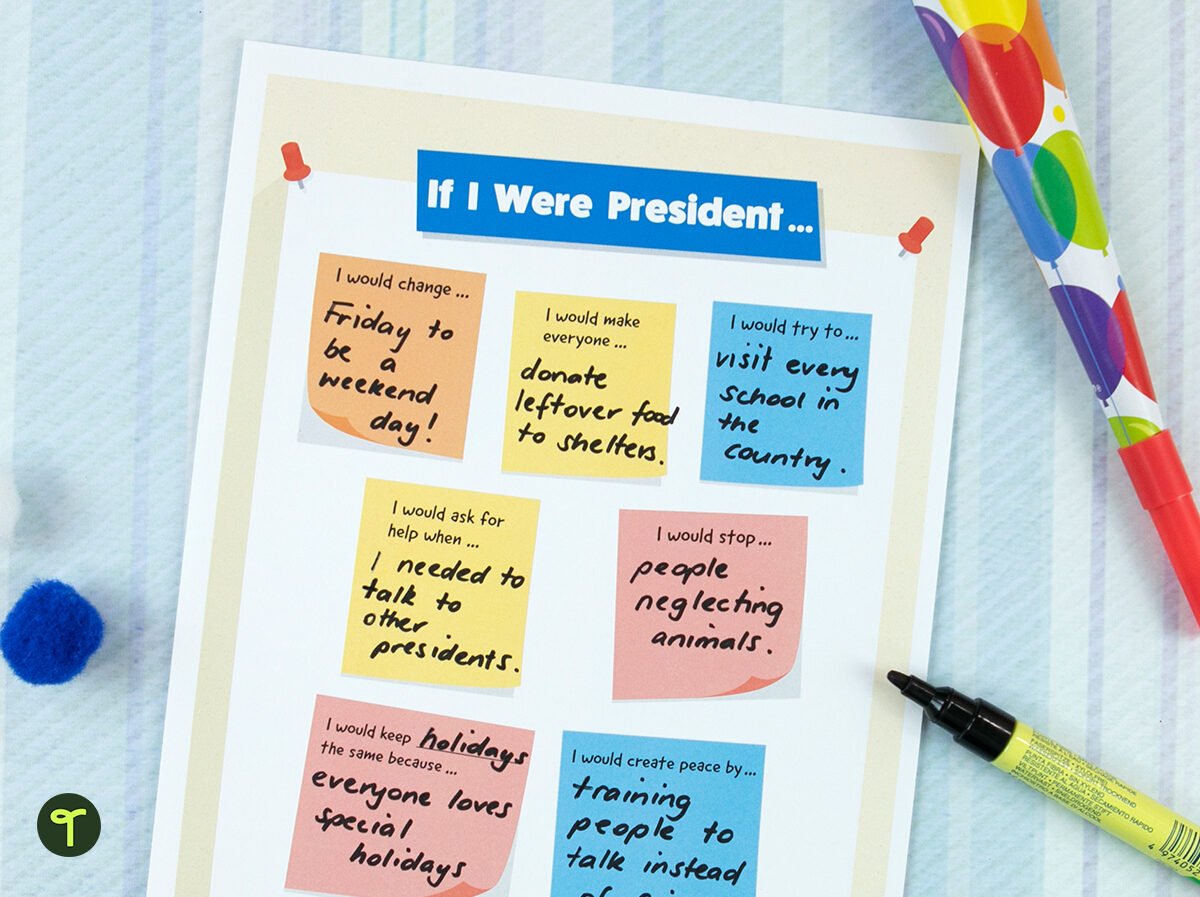
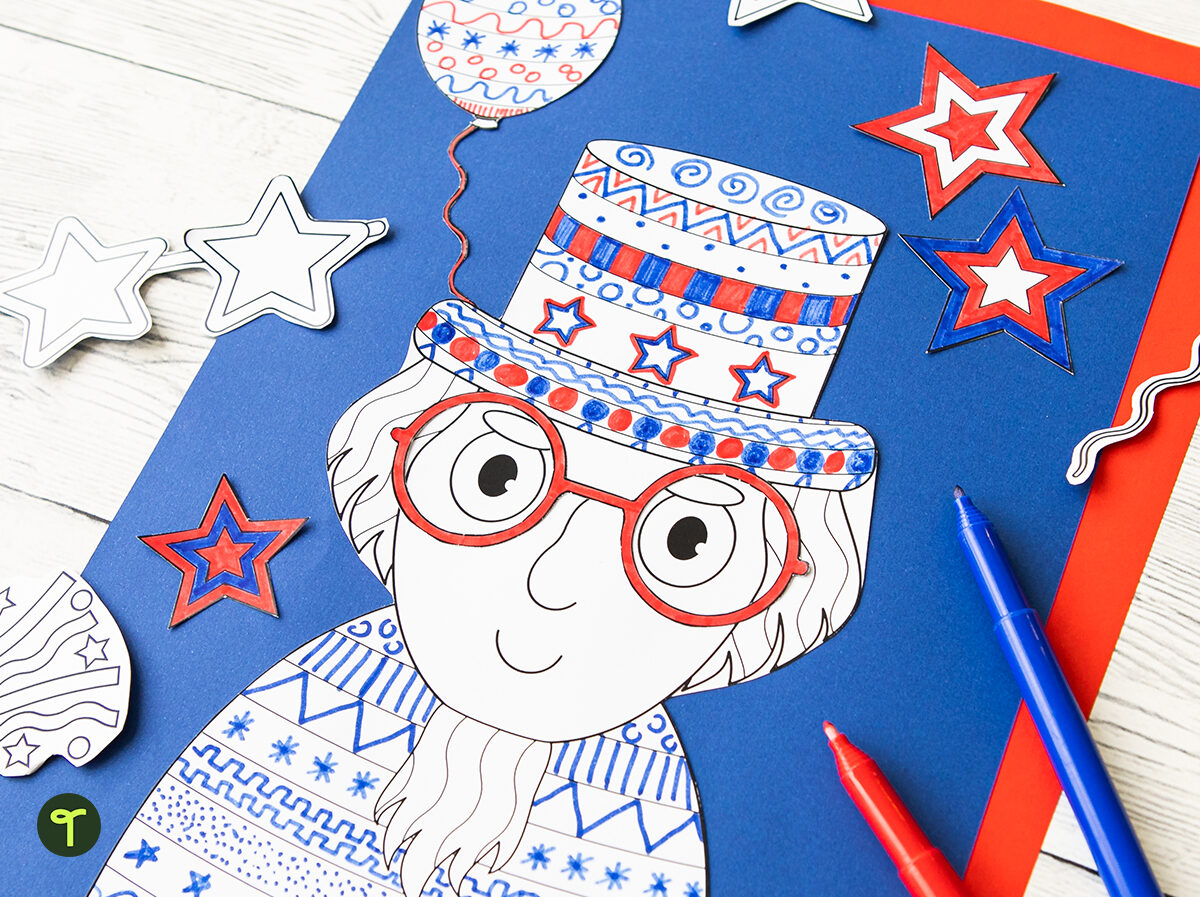
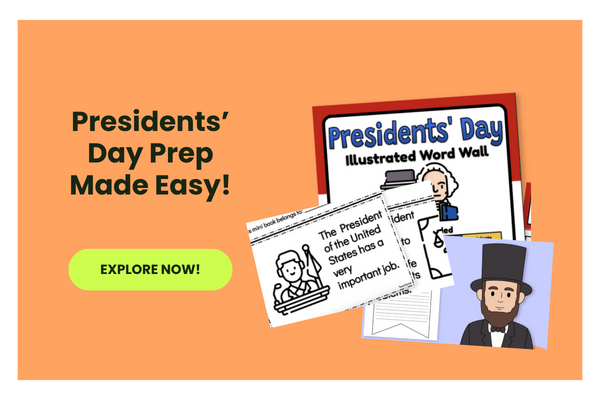






Comments